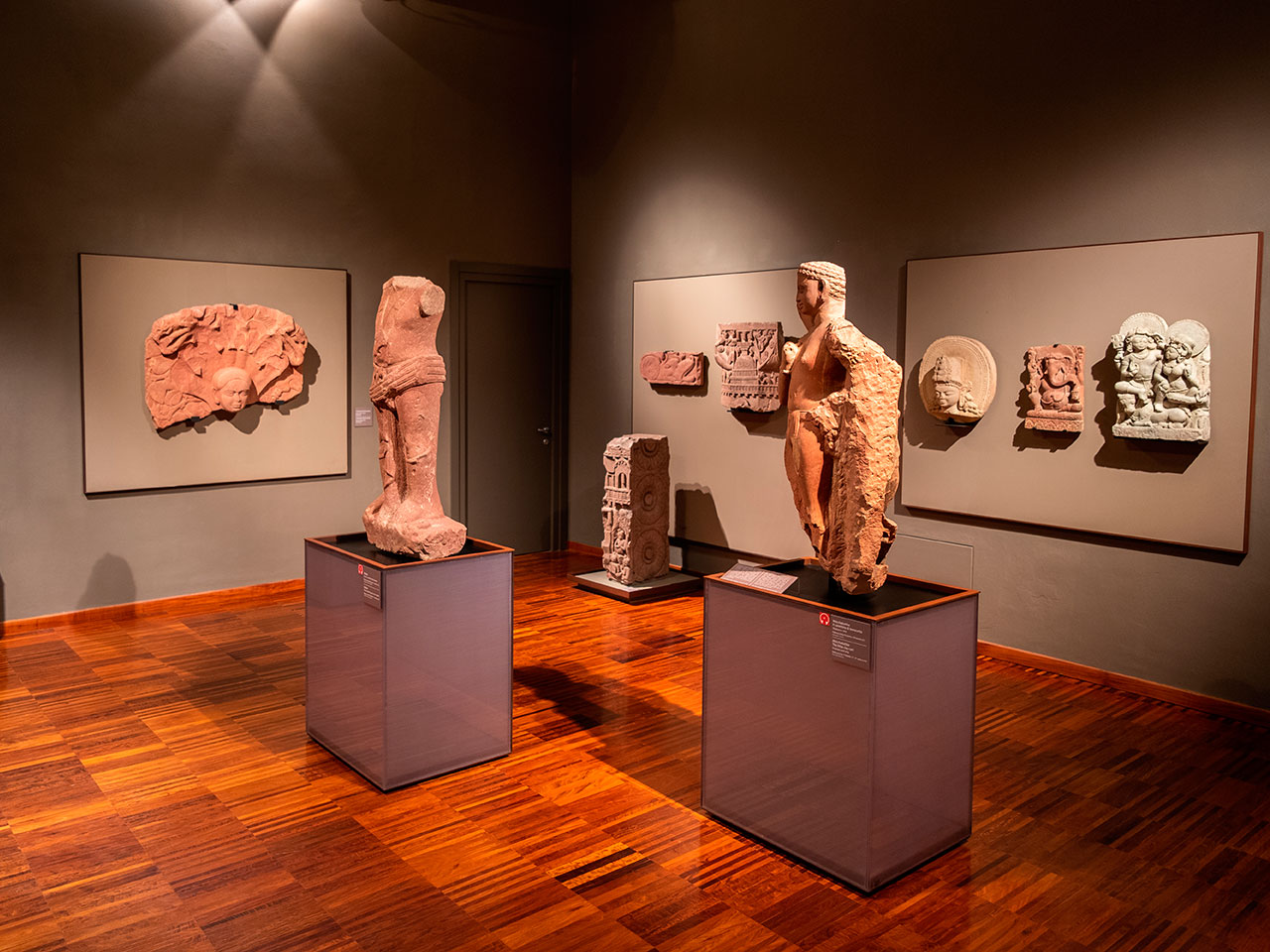The guided tour of the MAO consists of two distinct itineraries. The visit is centred on specific Galleries to best appreciate the most significant artworks exhibited and in order to help the visitor to better understand the culture and tradition underlying artistic production.
Guided tour allowed with a minimum of 2 participants.
The first visit explores the artworks conserved in the Galleries of China and Japan, beginning with the art objects of ancient China, characterised by Neolithic pottery, ritual bronzes, lacquers and terracottas dating from the Neolithic period to the 10th cent... more
The first visit explores the artworks conserved in the Galleries of China and Japan, beginning with the art objects of ancient China, characterised by Neolithic pottery, ritual bronzes, lacquers and terracottas dating from the Neolithic period to the 10th century A.D., and continuing in the suggestive gallery dedicated to Japan, which presents wooden statues of Buddhist inspiration, exceptional screens, samurai armour and paintings on vertical scrolls and polychrome woodcuts known as ukiyo-e, "images of the floating world".
The second visit explores the other three galleries: the tour starts with Indian art, with statuary of Buddhist and Hindu subjects of varying date, and continues through South East Asia. In the gallery dedicated to the Himalayan Region, artworks of Tibetan Buddhist art range from wood and metal sculptures to tempera paintings and precious carved and painted wooden covers. The tour ends in the gallery of the Islamic Countries of Asia, characterised by the rich collection of pottery and tiles and a valuable collection of bronzes, manuscripts and fine textiles.
By plane:
Turin Caselle International Airport is about 15 km from the centre. Connections to the city are provided by a shuttle bus service, with final destination the Porta Nuova railway station, which operates from 5:15 a.m. to 11:15 p.m. (journey time: approximately 40 minutes). The Torino Dora railway station can also be reached by train from the Caselle Aeroporto station (Turin-Ceres route) in 20 minutes with runs every half hour from 05:00 to 22:00. The airport also has an efficient car rental service.
By train:
Turin is a major national and international railway hub and has four railway stations: Porta Nuova, Porta Susa, Lingotto and Dora. At the main stations: Porta Nuova and Porta Susa, trains arrive from major Italian cities. The TGV to France also stops at Porta Susa.
By bus:
Departures of Italian and international bus lines take place from the terminals in Corso Inghilterra and from the Piazzale in front of the Porta Nuova and Porta Susa stations.
By car and motorbike:
Turin is at the crossroads of five motorways: the A21 Turin-Piacenza, the A4 Turin-Milan, the A6 Turin-Savona, the A32 Turin-Frejus-France and the A5 Turin-Ivrea. A dense network of state roads ensures connections with other cities in northern Italy and with the crossings to France.
Indicative road distances to Turin: from Milan 140 km; from Genoa 170 km; from Bologna 332 km; from Florence 395 km; from Rome 680 km. and from Venice 400 km.

Situated in the heart of the city, the building has a long history as witnessed by its various architectural parts. From an ancient Roman Gate, it was acquired in the 13th century by the Marquises of Monferrato and later by the Dukes of Savoy, becoming a residence and setting for festivities and weddings. It was later, with Christine of France and Maria Giovanna Battista Savoia Nemours (the two Royals Madame, or regents in favour of their children under age), that the building took on the appearance of an elegant residence, in particular at the behest of the second Madama Reale, thanks to whom the interventions of the architect Filippo Juvarra codified its definitive monumental appearance. Today, Madama Palace houses numerous collections and works of art, mostly donations to the city of Turin and dating back to different historical periods: from medieval and Gothic art to great altarpieces, among which Gaudenzio Ferrari stands out and, not to be forgotten, the portrait of an unknown artist by Antonello da Messina, the very icon of the Museum. On the upper floors, the tour continues in the Baroque rooms and among the refined collections of miniatures, glass and porcelain. Not to be missed is the viewing tower and, on the ground floor, the garden created following the study of documents and miniatures from the period.